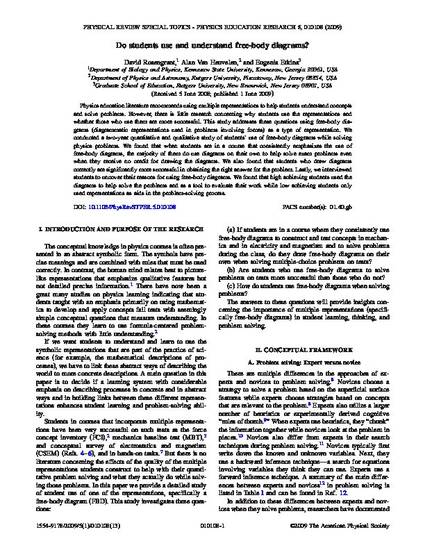
Physics education literature recommends using multiple representations to help students understand concepts and solve problems. However, there is little research concerning why students use the representations and whether those who use them are more successful. This study addresses these questions using free-body diagrams (diagrammatic representations used in problems involving forces) as a type of representation. We conducted a two-year quantitative and qualitative study of students’ use of free-body diagrams while solving physics problems. We found that when students are in a course that consistently emphasizes the use of free-body diagrams, the majority of them do use diagrams on their own to help solve exam problems even when they receive no credit for drawing the diagrams. We also found that students who draw diagrams correctly are significantly more successful in obtaining the right answer for the problem. Lastly, we interviewed students to uncover their reasons for using free-body diagrams. We found that high achieving students used the diagrams to help solve the problems and as a tool to evaluate their work while low achieving students only used representations as aids in the problem-solving process.
